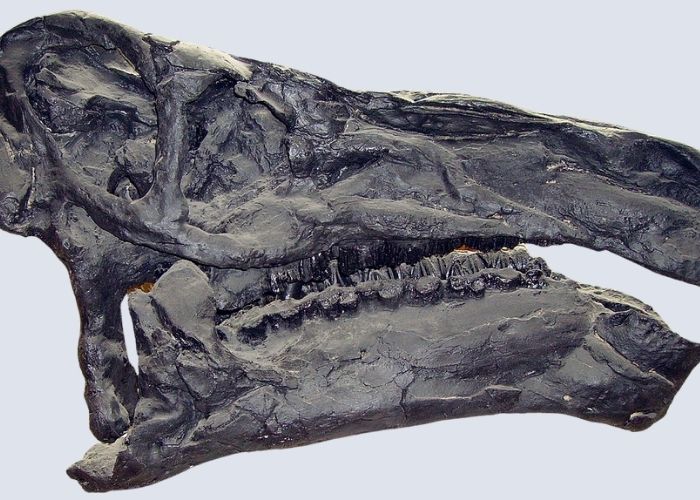CASTELLON – In Portell, northwest of the Spanish province, Castellón, fossil remains of a unknown species of dinosaur have been found. They resemble a giant iguana which lived on the Iberian Peninsula some 130 million years ago.
Field and laboratory work have shown this ‘new’ dinosaur, to be a large herbivore. Between 6-8 metres long and weighing up to 1,000 kilograms. Furthermore it looks closely related to other similar dinosaurs that lived in what is now China and Niger.
Scientists from the University of Jaime I (UJI) in Castellón and the University of Valencia participated in the year-long study. It was led by palaeontologist Andrés Santos-Cubedo. And the results were published on Wednesday in the American scientific journal Plos One.
Robust herbivore
The new dinosaur is herbivorous, large and robust, with teeth similar to those of an iguana. As such, it has been given the name ‘Portellsaurus sosbaynati’. Thus, the scientific name combines the site name (Portell) with the Greek word ‘sauros’ (lizard) to describe the genus. And also the name of Spanish geologist Vicente Sos Baynat – the first scientist to be awarded the title of Doctor Honoris Causa by the UJI- to name the species.
Jaw still almost complete
The project began in 2016. And researchers of the project described the new dinosaur species after finding and studying the fossil remains of a nearly complete right jaw. Previously, dinosaur remains have been found and catalogued in the area around Portell.
Paleontologist Andrés Santos-Cubedo stated the jawbone found has a ‘unique’ combination of features. He stressed that similar material cannot be found anywhere else in the world. Furthermore, he stated this new dinosaur species is closely related to the Chinese dinosaur ‘Bolong’ and the African ‘Ouranosaurus’.
More than 250 fossil remains
Santos-Cubedo also indicated that at the site of the jawbone and in its surroundings, more than 250 fossil remains of dinosaurs have been collected so far. However, laboratory tests are still being conducted to determine whether the remains are of the same species. In the areas of Aragon and Catalonia, more non-avian dinosaurs (species that are midway between the most classical dinosaurs and birds) have been described.
The researcher explained that other dinosaurs that might have lived together with the ‘Portellsaurus sosbaynati’ are certain bird-like and crocodilian species, and that fish teeth and the remains of several invertebrates have also been found.
More excavations needed
Santos-Cubedo pointed out that there are ‘only’ 25 species of dinosaurs in Spain that have been described to science for the first time from the fossils that have been found. The remains found now match the oldest species of dinosaur in the province of Castellón that lived there about 130 million years ago. In order to do more excavations and to be able to prepare and study all the material that the palaeontologists have found in the area, more resources are needed.
The scientist also emphasised that the sites have not yet been excavated ‘deeply’. And that other fossils have already been discovered that have yet to be extracted from the ground. Furthermore, these fossils may also reveal new species that are still unknown to scientists.


